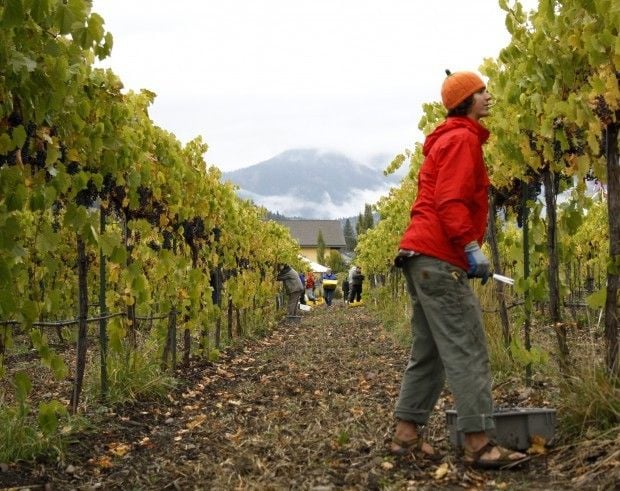
Climate change warnings tend to focus on the losers, but western Montana would come up a winery winner, according to a new scientific analysis of temperature trends.
“Winter temperatures have been a limit to vineyard growth in our state,” said Gary Tabor, director of the Center for Large Landscape Conservation in Bozeman and one of the co-authors of “Climate Change, Wine and Conservation” in the Proceedings of the National Academy of Sciences. “So as we see our temperatures not being as Montanan as before, we’re seeing the impact of climate change in how people look at agriculture. Folks in Oregon and Washington are looking at our vineyards here to expand production.”
The scientific paper examined 17 global climate models to see how warming temperatures might affect grape-growing areas around the globe in the next 40 years. It predicted places like California’s wine-growing regions could lose more than 50 percent of their suitable territory, while the Canadian border country of Montana, Washington and Idaho could see a 200 percent boost in vineyard potential.
But don’t start investing in oak barrels just yet. The study warns that new interest in grape cultivation could hurt wildlife habitat, especially if future farmers start fencing off places deer, elk and bear depend on. In particular, the researchers found most of the best potential grape zones tended to be close to or in strongholds of threatened grizzly bears in the United States or panda bears in China.
“China is not known for its European-style wines, but it is among the fastest-growing wine-producing regions in the world,” the study reported. “It has significant areas suitable for viticulture, and these areas are in the same mountains that are habitat for the giant panda.”
***
Missoula-based Ten Spoon Vineyard and Winery co-owner Andy Sponseller had some other caveats for those thinking of switching crops. While a 2- or 3-degree average warming trend would be great for tomatoes or wheat in western Montana, his Rattlesnake Valley vineyard has endured other challenges.
“I’ve been growing grapes here 15-plus years, and I’ve seen a distinct warming pattern,” Sponseller said. “But in the past five years, the weather has also been becoming more erratic. We’ve seen more short-term weather patterns, like several weeks of warmer weather in the spring punctuated by a deep swing on a two- or three-night basis like last year. We had three 26-degree days after May 13. We had two sub-freezing days in mid-September. Fifteen years ago, it was not unusual to have those after Labor Day, but in the past 10 years, that’s become an erratic event.”
And those erratic events wreak havoc on grape crops. While an acre of wine-quality grapes can bring $6,000 compared with $1,000 for an acre of hay, the gamble gets that much bigger, too.
“Look at infrastructure and labor to grow that $6,000 in grapes,” Sponseller said. “The hay still looks attractive to a lot of guys – swath it, turn it, bale it and you’re done. With grapes, every day you’re doing something to them. Just do the math.”
Virtually all grape vineyards also require irrigation, which the study spotlights as another problem. Wine regions such as Chile’s Maipo Valley may need to mist their crops to offset the rising temperatures, using water supplies already under stress from shrinking glacial sources. And while places like the Inland Northwest are relatively rich in water, don’t expect any current irrigators to willingly part with their share for upstart vintners.
“You’re going to have water tradeoffs in a warmer world, and vineyards are water sinks,” Tabor said. “How counties will manage their water will be a big issue.”
The study also forecast trouble for southern European, South African and Australian wine country, along with improvements for places like New Zealand and northern Europe.
“We’re going to see some changes in the grape industry,” Tabor said. “And if we’re going to see new types of agriculture, we need to start thinking how do we do it in ways compatible with wildlife and other things Montanans care about. Between now and 2050, we should do the best we can to protect wildlife habitat and buffer the range of climate change. That’s a conservation strategy for the future.”
Reporter Rob Chaney can be reached at 523-5382 or at rchaney@missoulian.com.
No comments:
Post a Comment